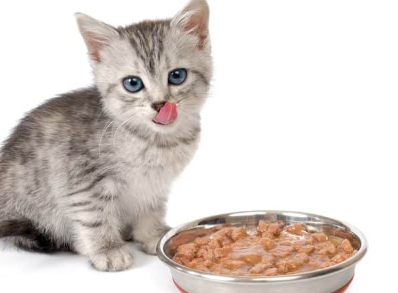The Best Cat Food Brands, According to Vets in 2022
The best cat food brands should be easy to distinguish from the rest in theory, but it may require some research. Your cat's needs, which may be established by their life stage, activity level, digestive health, and general well-being, should be considered when choosing a pet food, in addition to satisfying industry and veterinary standards (more on that below). Oh, and you ought to probably seek a kind of food that your cat actually enjoys eating as well.
Cat meals don't come in one size fits all, as Aimee Simpson, VMD, medical director of the VCA Cat Hospital of Philadelphia, tells SELF. However, you may locate the best with some direction from an expert and some investigation
 |
What should I look for when buying cat food?
Like dog food, cat food must meet specific criteria established by the Association of American Feed Control Officials (AAFCO) in order to be considered nutritionally complete. The AAFCO is not a regulating entity, as SELF has previously reported. Instead, it establishes industry standards for a wholesome, balanced diet.
She adds that the amino acid taurine is another essential nutrient for cats, and some foods contain much higher levels of protein and other nutrients than is recommended, which can lead to illnesses: “Excess levels of protein, phosphorus, and sodium can exacerbate chronic kidney disease, while too much calcium may lead to the formation of urinary tract crystals and stones.”
Dr. Simpson also cites international dietary recommendations from the World Small Animal Veterinary Association (WSAVA), which expressly address the caliber of pet food producers, in addition to the AAFCO. These recommendations incorporate numerous crucial inquiries you have to make regarding cat food:
Do they have at least one full-time veterinary nutritionist on staff who is either board-certified by the American College of Veterinary Nutrition or holds a Ph.D. in veterinary nutrition?
Do they operate their own factories?
To continuously enhance their meals, do they do and publish nutritional research?
Do they adhere to tight quality control procedures and guidelines?
Again, these are fairly general suggestions, but they help distinguish between high-quality cat food and cat food that only fulfills the bare minimum requirements. You can always contact a brand's customer service team for more information if you aren't completely certain about the caliber of a particular brand or ask your veterinarian about it.
 |
What should I look out for on a cat food’s ingredient list?
The order in which components are stated can be deceptive, Dr. Simpson adds, adding that it can be difficult to read pet food labels. She gives the following illustration: "Substances such as chicken meat are listed before dehydrated ingredients such as the chicken meal that may supply more nutrients because they contain more moisture and therefore weigh heavier."
You might notice grains on your food's ingredient list in addition to superior protein sources and nutritive animal protein by-products like liver and other organ meats; this is entirely fine for your cat's diet. says Dr. Simpson. Although cats are obligate carnivores, she says, they can digest the carbohydrates found in typical cat meals. "Grains and corn are typically portrayed as pet food fillers; nevertheless, these components are actually rich providers of vitamins, minerals, vital fatty acids, and fibre," she says.



0 Comments